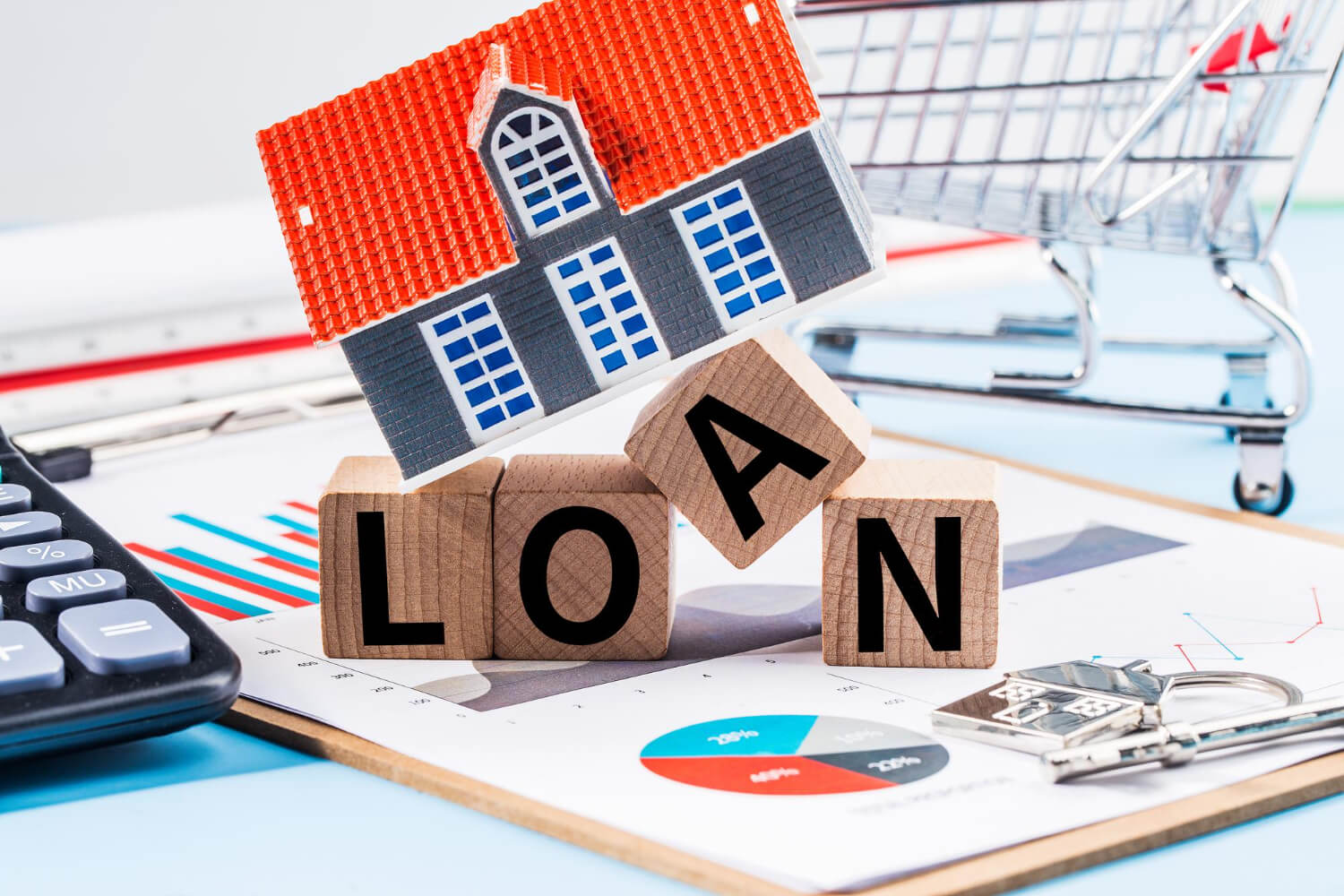
In personal finances, maximizing savings is a primary objective to ensure long-term economic stability and growth. One of the most powerful tools available to achieve this goal is home loans refinancing. Refinancing offers several benefits that can help homeowners reduce monthly payments, obtain more favorable interest rates and consolidate debt, among other advantages. Let’s explore the benefits of refinancing homes in the U.S. and how it can significantly contribute to maximizing savings and improving your financial health. Join us until the end of the content!
What is mortgage home loans refinancing?
Home loan refinancing is when a homeowner replaces their existing mortgage loan with a new one, usually with more favorable terms. Home refinancing can have several objectives, such as lowering the interest rate, lowering monthly payments, changing from an adjustable rate loan to a fixed rate loan, or even obtaining cash by withdrawing equity built up in the property. Refinancing homes in the U.S. follows a specific process. Here are the main steps:
Situation Assessment:
The homeowner should analyze their current financial situation, review their mortgage loan and determine if refinancing is feasible. It involves considering factors such as the current market interest rate, the time you plan to stay in the property, and the costs associated with refinancing homes.
Lender shopping:
Once you have decided on refinancing homes, you should compare offers from different lenders. Research and obtain quotes from several financial institutions to find the best option that suits the homeowner’s needs and goals.
Refinance Application:
The refinance application is complete once a lender is selected. You should provide detailed information on income, assets, debts, and other relevant financial aspects. It is also necessary to provide documents such as bank statements, proof of income, and property records.
Lender Evaluation:
The lender will review the application. They will run a risk assessment to verify the information provided and conduct a credit investigation. It is also necessary to do a property appraisal to determine its current value to make refinancing homes as risk-free as possible.
New Loan Approval and Closing:
Once the application is approved, the lender will issue a loan offer with terms and conditions. The homeowner will carefully review this offer and proceed to close on the new loan. The closing will include the signing of the documents and the adjustment of any fees or costs.
Refinancing a home loan involves additional costs, including closing costs, lender fees, and appraisal fees. These costs in refinancing homes vary by lender and individual situation, so it is essential to consider them when evaluating the benefits of refinancing.
Learn about the benefits of mortgage loan refinancing

Home loan refinancing in the United States can offer you several benefits. Below, we will share with you the top ten benefits of home refinancing:
Reduced monthly payments:
One of the most common benefits of home loan refinancing is the ability to reduce your monthly mortgage payments. You can reduce your premiums by obtaining a lower interest rate or extending the loan term.
Lower interest rate:
Another advantage of refinancing is that you can get a lower interest rate than the original mortgage. It can result in significant savings over the loan term.
Debt consolidation:
Home loan refinancing can also offer the opportunity to consolidate other debts, such as personal loans or credit cards, into a mortgage. It allows to merge debts into a single monthly payment with a lower interest rate.
Improved liquidity:
If the home has increased in value since the original mortgage closing date, home loan refinancing may allow the homeowner to access their home equity. It can provide additional liquidity for financial needs, such as making home improvements or paying for medical expenses.
Interest rate change:
With home loan refinancing, you can switch from a variable interest rate to a fixed rate, providing stability in monthly payments. It can be especially beneficial when long-term interest rates tend to rise.
Reducing the loan term:
If you can take on higher monthly payments, refinancing may let you reduce the loan term. It can result in significant interest savings over time, and the homeownership will pay off faster.
Elimination of Private Mortgage Insurance (PMI):
After building up enough equity, home loan refinancing may allow the elimination of PMI. It occurs when the loan represents less than 80% of the property value, which can generate additional monthly savings.
Budget flexibility:
Refinancing a home equity loan can provide greater flexibility in household budgets by reducing monthly payments or consolidating debt. It can free up additional money for other financial needs or goals.
Opportunity to improve credit:
If home loan refinancing allows for debt consolidation or improved monthly cash flow, it is possible to use these benefits to pay obligations regularly. It can help improve long-term credit history.
Simplifying finances :
By combining multiple debts into a single mortgage loan, refinancing can simplify personal finances. It involves making a single monthly payment instead of dealing with several obligations, making it easier to manage finances.
Mortgage Refinancing Myths You Should Not Believe

Today, many myths about refinancing are untrue and may instill unnecessary fears. Here are the 10 most common home loan refinancing myths and why you shouldn’t believe them:
Myth 1: Home loan refinancing is always expensive.
While refinancing can involve certain costs, such as appraisals and closings, it can also generate significant savings in the long run. It is crucial to weigh the costs against the potential benefits before refinancing.
Myth 2: You can only refinance once.
In reality, it is possible to refinance a mortgage more than once. Once you meet the conditions and qualifications, you can refinance at different times to take advantage of lower interest rates or adjust to changes in your financial situation.
Myth 3: You need a perfect credit score to refinance.
While having a good credit history is critical, it is not necessary to have a perfect credit score to refinance. There are programs and options available for those with different credit profiles, and it is advisable to research the available alternatives.
Myth 4: Refinancing extends the term of the loan.
While it is true that refinancing can extend the loan term, it is also possible to opt for a shorter term. It depends on the borrower’s goals and ability to repay. It is even possible to reduce the term of the loan when refinancing.
Myth 5: You can’t refinance if you have low equity home
While having a substantial amount of equity may be beneficial when refinancing, it is not an exclusionary requirement. Even those with little equity can find favorable refinancing options, such as lower interest rates or debt consolidation.
Myth 6: Refinancing is good only if you plan to live in the property for the long term.
While refinancing may be more beneficial in the long term, it can also generate significant savings in the short term. Even if you plan to live in the property for a while, you may find opportunities to reduce your monthly payments or improve the loan term.
Myth 7: You can only refinance with the same lender.
It is optional to refinance with the same lender from which you get your mortgage. Borrowers can shop around, and compare offers to find the most favorable interest rates, terms, and costs.
Myth 8: Refinancing always requires an appraisal.
While many refinances involve a property appraisal, not all require one. You can refinance without a property appraisal or use an automated appraisal. It can streamline the process and reduce associated costs.
Myth 9: You can’t refinance if you have an adjustable-rate mortgage.
It is possible to refinance an adjustable-rate mortgage. Many people decide to refinance from an adjustable rate to a fixed rate to get steadiness in monthly payments and protect themselves from possible interest rate increases.
Myth 10: You can only refinance when interest rates drop significantly.
While lower interest rates are attractive for refinancing, you don’t have to wait for them to drop significantly. Even a slight decrease in interest rates can generate significant savings in the long run. In addition, there are other factors to consider, such as debt consolidation or improved liquidity, which can be beneficial even without drastic changes in interest rates.
You already know the benefits of home refinancing, and now we want you to know about our services. We are Dream Habitat, the ally you need to successfully close your home loan so you can have the home of your dreams. The transparency and support of our CEO with 16 years of experience make us your best option to access home loans in the U.S. Visit our website!
Let’s make it happen!







